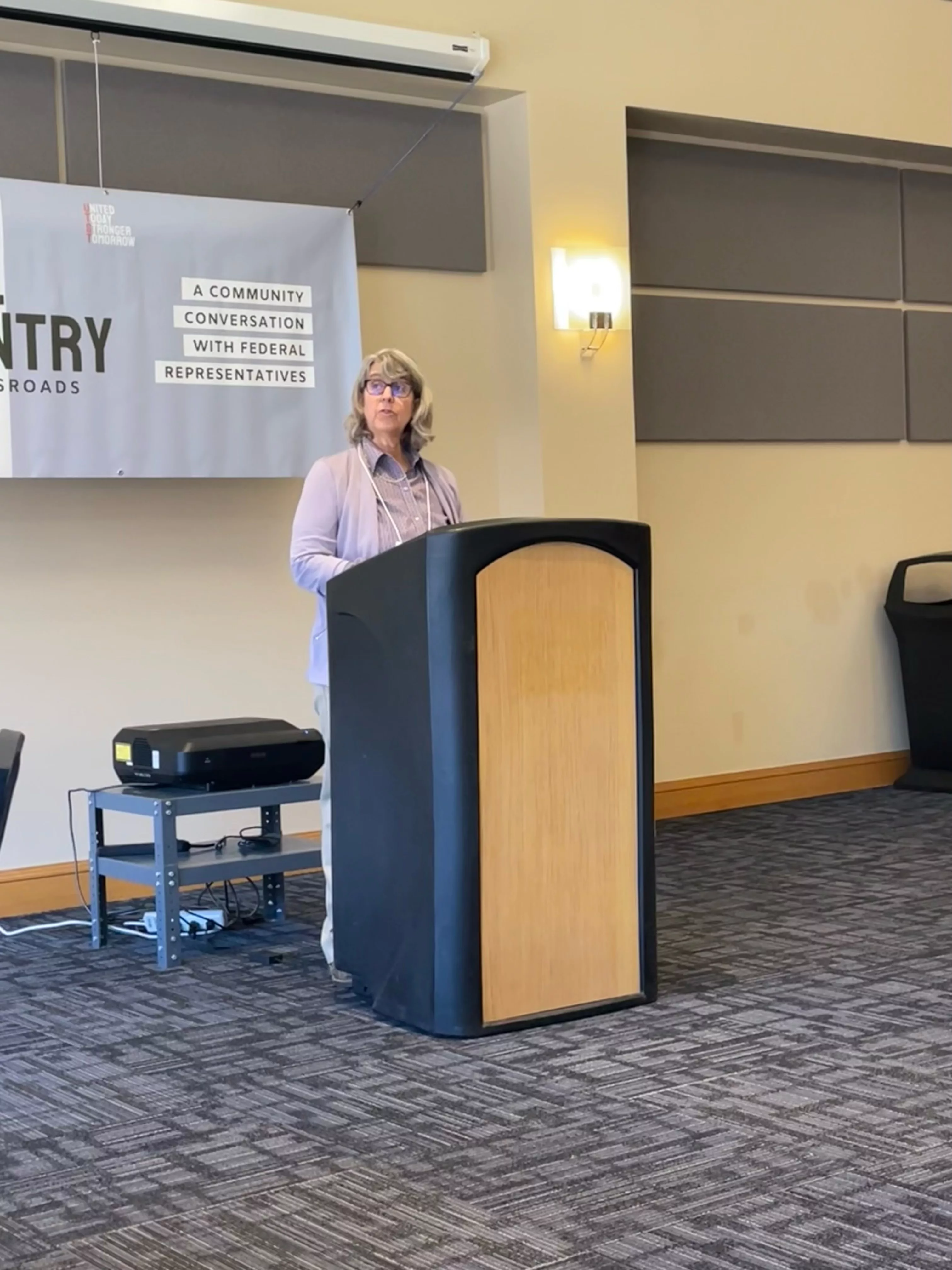
Back in December, Helper City Mayor Lenise Peterman traveled to Washington D.C. to meet with officials to ask them to spend some time in rural areas affected by a shift in energy production. On Wednesday, at the Jennifer Leavitt Student Center on the Campus of Utah State University Eastern, Ben Beachy, with the Biden administration, as well as other leaders from the public and private sector were in Price to listen to concerned local leaders and let those in attendance know what was coming.
Tuesday and Wednesday, elected officials, business leaders, and members of the community took part in “Coal Country at a Crossroads”, presented by the Biden administration. Over the two days, they discussed different opportunities for federal funding to address community needs.
The discussion put on with the support of United Today, Stronger Tomorrow was meant to open lines of communication between local governments and the current administration to help Washington better understand the needs of rural Utah as well as the rest of the country.
Peterman kicked off the morning session, which was open to the media, by talking about her trip, where she met with members of the administration to share concerns about programs and opportunities in rural areas across the country and asked for several federal agencies to come to our area for a town hall type setting where they could listen to citizens voice their concerns as well.
After Peterman, Beachy, who is the Special Assistant to the President on Clean Energy and Industrial Policy, took to the podium. Growing up in a small coal community in West Virginia, he began his speech by talking about how he witnessed firsthand how, “Wrong-headed policy decides to abandon communities that have given so much, leaving behind low-paying jobs, depleted tax revenue, and empty downtowns.” He then went on to say that the Biden administration has invested nearly 20 billion dollars in energy communities including coal communities in just the last three years, to be used to help those communities create high-paying jobs, repair infrastructure, clean up pollution, and seize the economic benefits in the boom in clean energy.
“This funding is part of President Biden’s Investing in America Agenda, the President’s infrastructure law is supplying more than 2 billion dollars in the state of Utah to upgrade roads, bridges, and public transit including funding to upgrade and repave US-6 in Carbon County”, Beachy went on to say.
Elijah Waters was up next. Waters is the Acting District Manager of the Bureau of Land Management Green River District. He discussed the BLM’s issuance of notice to proceed with the Transwest Powerline. It is an approximately 728-mile powerline that spans four states including Utah.”It is the largest renewable transmission line in the west and it transports renewable energy from the largest onshore wind facility, coming out of the state of Wyoming, and transporting that energy to markets in the southwest.” The powerline will cost over 3 billion dollars to complete and will employ over 1,000 Americans in the construction phase alone. Waters ended his part of the discussion by saying that BLM Utah will be there to respond to all of the needs of the rural communities.
Jeff Anderson, the apprenticeship director operating engineers local three. Anderson talked about how the unions are ready to recruit the next generation of workers, ready to train them and produce the quality journeymen that it will take to build the work across our state, and that they are looking forward to the challenge.
Josh Craft, government relations director at Utah Clean Energy stepped up to the podium to talk about Utah’s potential to be a leader in clean energy. “National investments made by the Department of Energy and other agencies play a critical role in tapping into the enormous potential of what we have in Utah to bring online a whole range of projects energy-efficient projects, clean energy projects, energy storage, zero emissions vehicles, and clean energy manufacturing projects”, Craft went on to add that Utah has heard so much about its solar potential, pumped hydro storage potential as well as clean hydrogen and geothermal. He also mentioned the Carbon and Emery counties are at the forefront of the energy transition, by diversifying their economy as we see changes on a global scale.
